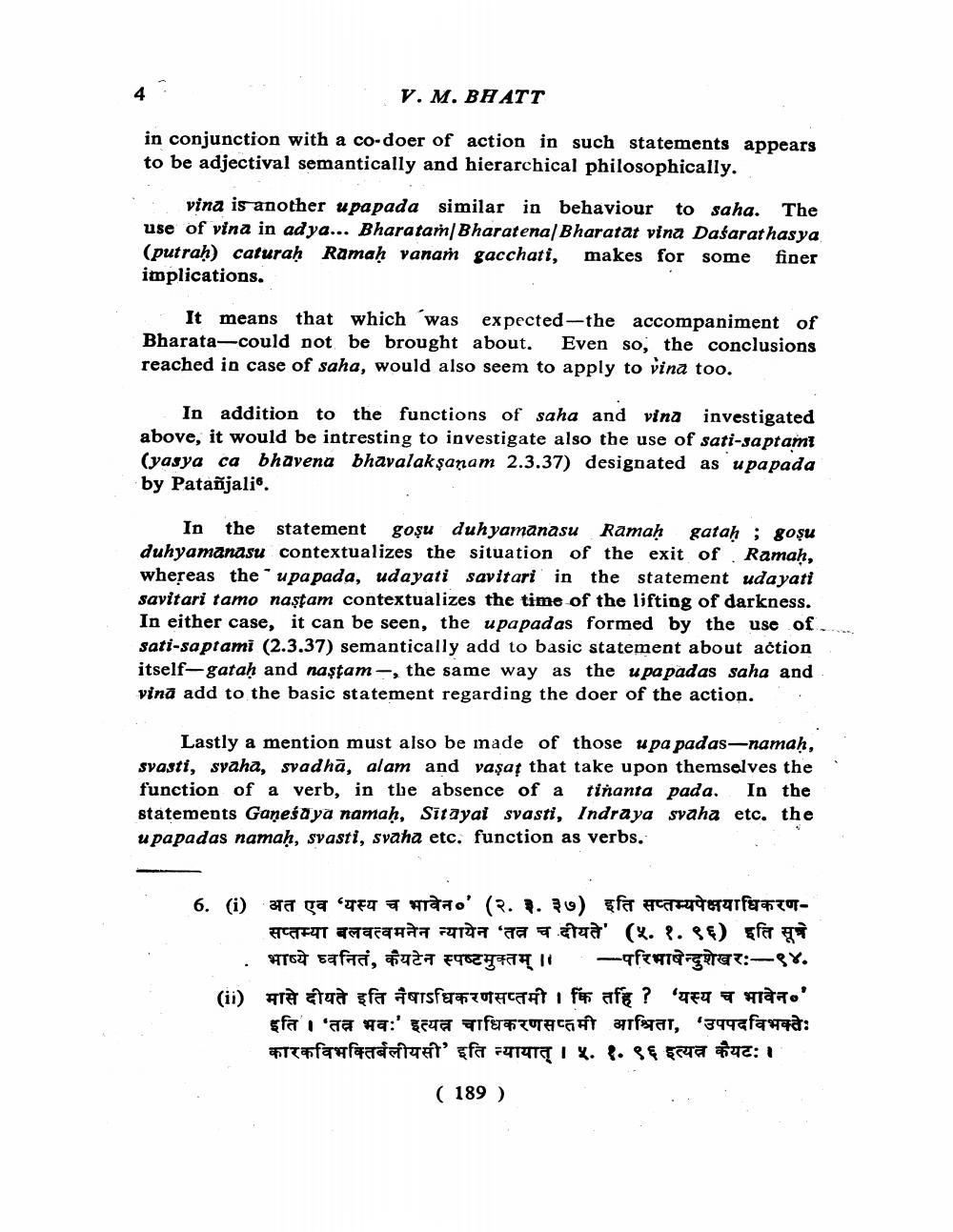________________
V. M. BA ATT
in conjunction with a co-doer of action in such statements appears to be adjectival semantically and hierarchical philosophically.
vina is another upapada similar in behaviour to saha. The use of vina in ad ya... Bharatam Bharatena Bharatat vina Daśarat hasya (putraḥ) caturaḥ Ramaḥ vanam gacchati, makes for some finer implications.
It means that which was expected- the accompaniment of Bharata-could not be brought about. Even so, the conclusions reached in case of saha, would also seem to apply to vina too.
In addition to the functions of saha and vina investigated above, it would be intresting to investigate also the use of sati-saptamt (yasya ca bhavena bhavalakşanam 2.3.37) designated as u pa pada by Patañjali.
In the statement goșu duhyamanasu Ramah gatah ; goșu duhyamanasu contextualizes the situation of the exit of Ramah, whereas the 'upa pada, udayati savitari in the statement uda yati savitari tamo naştam contextualizes the time of the lifting of darkness. In either case, it can be seen, the upapadas formed by the use of sati-saptami (2.3.37) semantically add to basic statement about action itself-gataḥ and naştam-, the same way as the upa padas saha and vind add to the basic statement regarding the doer of the action.
Lastly a mention must also be made of those upa padas-namaḥ, svasti, syaha, svadhā, alam and vaşar that take upon themselves the function of a verb, in the absence of a tiñanta pada. In the statements Gaņeśaya namaḥ, Sitayai svasti, Indraya svaha etc. the upapadas namaḥ, svasti, svaha etc. function as verbs.
(i) Ta ga 'TFT wao' (2. R. RU) çfa T our T
सप्तम्या बलवत्वमनेन न्यायेन 'तत्र च दीयते' (५. १.९६) इति सूत्रे
भाष्ये ध्वनितं, कैयटेन स्पष्टमुक्तम् ।। -परिभाषेन्दुशेखरः-९४. (ii) HÈ tua gfa farsfa utcafü afg ? TEU Tao'
इति । 'तत्र भवः' इत्यत्न चाधिकरणसप्तमी आश्रिता, 'उपपदविभक्तेः कारकविभक्तिर्बलीयसी' इति न्यायात् । ५. १. ९६ इत्यत्र कैयटः।
( 189 )




